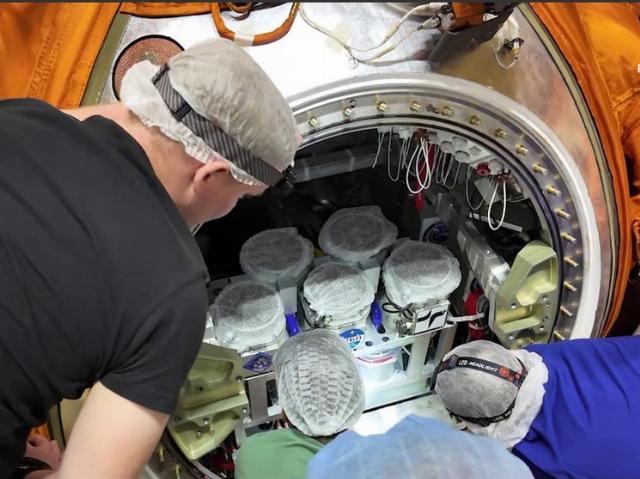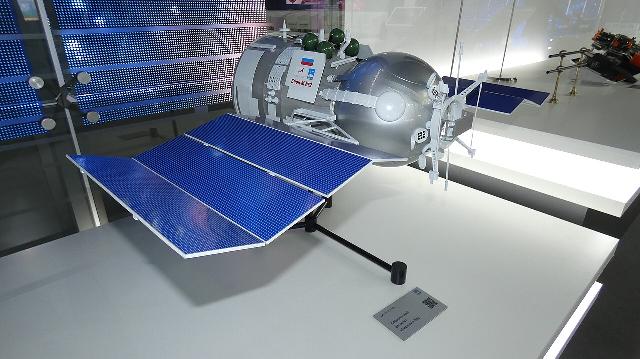For the first time in 12 years, our country has launched a biological satellite into space. There are dozens of rodents and many other organisms on it. After a month in polar orbit, where satellites with animals had not been taken before, they will be returned to Earth, where they will try to find out how the increased radiation from such an orbit affected living beings.
The USSR regularly launched biological satellites with various organisms into orbit, starting with the infamous Laika dog, which Khrushchev sent into space in time to do something big for the anniversary of the October Revolution in 1957. Since the experiment was lowered from above and required to be implemented faster than a month after the launch of the first satellite, it was impossible to develop any rescue measures or even a thermoregulation system for the animal during this time. Therefore, the first ever mammal in orbit died shortly after entering there (from overheating). This is how the first flight of the terrestrial biosatellite ended. A special commission of the Central Committee did not believe this, which is why it conducted a ground simulation of her flight, in which two more dogs died.
Subsequent Soviet bioexperiments already had scientific goals and were being developed normally. By the 1980s, the BION series of satellites had already been launched every few years. However, in the 1990s, this was stopped due to the cancellation of funding. In 2013, they tried to resume the tradition. The experience was lost, so there were problems: the rooms for rodents were designed without understanding the characteristics of these animals, they got out, chewed through the wires, which caused some of the other animals to die. The next launch of BION-M2 was planned for 2019, but it was significantly delayed, so it happened only on August 20, 2025.
The BION-M2 satellite was launched by a Soyuz-2.1b rocket from the Baikonur cosmodrome into polar orbit. This is the name given to orbits with an inclination of more than 80 degrees, due to which they pass close to the Earth's poles or even directly above them. Before that, specialized biological satellites had not been launched at such high inclinations. The height of its orbit is 370-380 kilometers. 75 mice were placed on board the 6.4-ton satellite, some of which were genetically modified to tolerate radiation worse than usual, some tried to protect them from space radiation, and some remained standard.

The mice on board the BION-M2 are located in such artificial nests.
Image Source: Roscosmos
In addition, the device carries fifteen hundred drosophila flies, a species whose representatives once became the first astronauts of the Earth (in the 1940s, aboard the captured German V-2). There are microorganisms, plant seeds, and human cell cultures. The most unusual bioexperiment of the satellite is a fragment of basalt in the thermal protection, where several types of microbes were placed. The researchers want to find out how they will survive the return without thermal protection in the atmosphere in order to assess the possibility of such organisms getting from one planet to another with small debris.
The reasons why the device became the first ever biosatellite in polar orbit is that they plan to launch the Russian ROS space station there, about the ambiguous prospects of which we wrote here . In such an orbit, the annual radiation dose is around 200 millisverts, while on the ISS it is only about 150. According to the head of Roscosmos, based on the results from the biosatellite, decisions will be made on the final choice of the orbit for the future national station.
The young mice on board the BION-M2 carry implanted temperature and pulse sensors. After measuring them, the scientists plan to compare the parameters with those of a control group of mice of the same lineage on Earth. After a month-long flight, the rodents that have been in space are examined in a ground laboratory to identify the effects of increased radiation on them.
Today, a number of Russian researchers postulate the harm of cosmic radiation to living organisms, including humans. On this basis, they even declare the danger of flights to Mars. At the same time, other Russian scientific groups have shown the positive effects of cosmic rays on the body of rodents. They even showed an increase in cognitive abilities after such exposure. The same scientific group com/science/article/abs/pii/S0306452219305512?via%3Dihub" target="_blank" rel="nofollow">showed the therapeutic effect of cosmic radiation on mice with Alzheimer's disease (for which they had to be given some human genes). This is a work of great importance, because no other effective remedies for this disease are known. BION's flight is unlikely to change the fundamental differences in views between different scientific groups on the real role of cosmic radiation. It is more likely that this will be done by the practice of American flights to the Moon and Mars in the coming decades.

